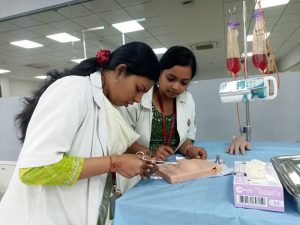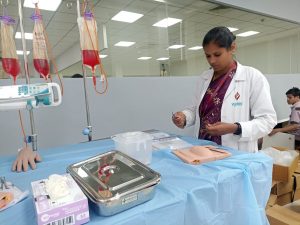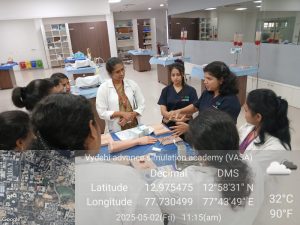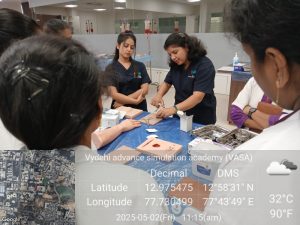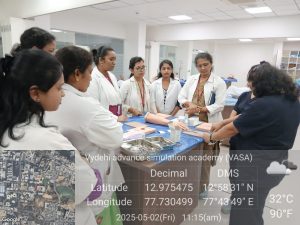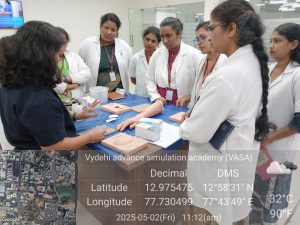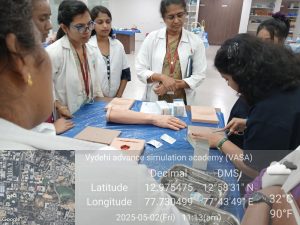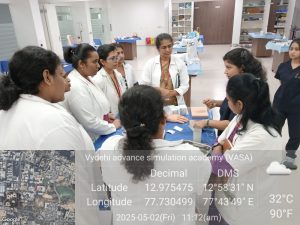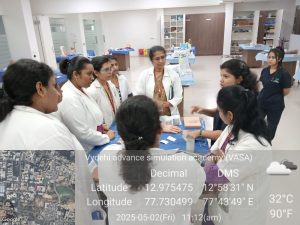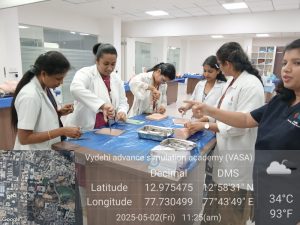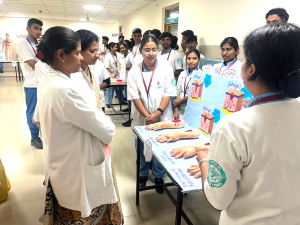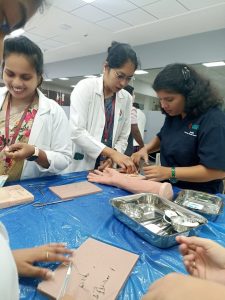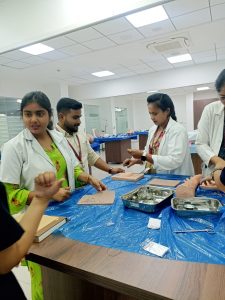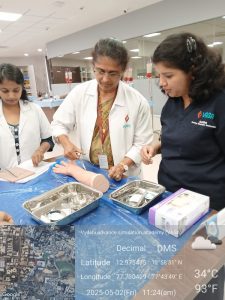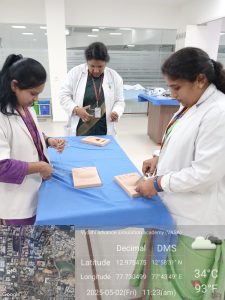News and Event
Suturing for teacher training
News Type : General News
28/08/2025
DATE: 01/05/25 and 02/05/25
TIME: 10AM to 1PM
VENUE: VASA (Simulation Lab)
ORGANIZED BY: Department of Adult Health Nursing (Medical- Surgical Nursing)
TOPIC: SUTURING
OBJECTIVE: To develop and refine technical proficiency in various suturing techniques under simulated condition.
SUTURING TECHNIQUES PRACTICED:
- Simple Interrupted Suture
- Continuous (Running) Suture
- Mattress Suturing
- Vertical Mattress Suturing
- Horizontal Mattress Suturing
MATERIALS USED:
- Synthetic skin pads
- Nylon and absorbable suture
- Needle drives, forceps, scissors
- Gloves, Antiseptic solutions
KEY LEARNING POINTS:
- The importance of maintaining aseptic techniques
- Appropriate needle angle and entry point for different tissue layers
- Choosing the right type of suture material and technique based on wound type and location
- Knot security and suture spacing for optimal healing
We Department of Medical- Surgical Nursing Organized a training on Suturing at VASA on the date of 01/05/25 and 02/05/25. There were 2 group divided first group went on 1st May, Thursday and the second group went 2nd May, Friday. All the teaching staff along with the Principal went for training. Mrs. Anitha was incharge for the training. She taught us regarding suturing, types, articles, steps. She gave time for practice as well.Mrs. Anitha is giving training as below picture:
CHALLENGES ENCOUNTERED:
- Initial difficulty in maintaining equal spacing and depth of sutures.
- Managing hand tremor during fine movements.
- Adjusting knot tension to avoid overtightening or loosening.
FEEDBACK RECEIVED:
- Instructor emphasized the importance of knot securityand consistency.
- Recommended practicing eye-hand coordinationexercises to improve control.
- Gained hands-on experience with multiple techniques
- Positive feedback on improvement during the session, especially in suture placement.
CONCLUSION:
The suturing simulation on May 1st and 2nd was a valuable learning experience. It provided a safe environment to develop essential surgical skills and reinforced theoretical knowledge through practical application. Continued practice is necessary to achieve proficiency and confidence in real clinical settings.

